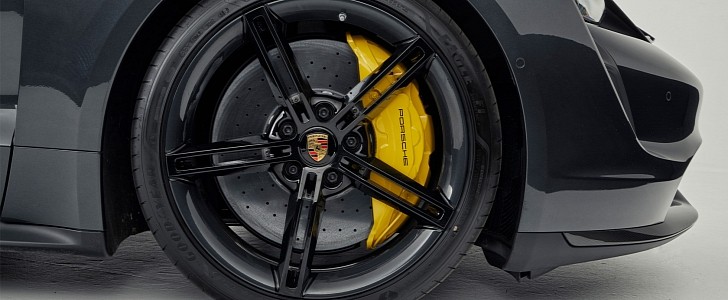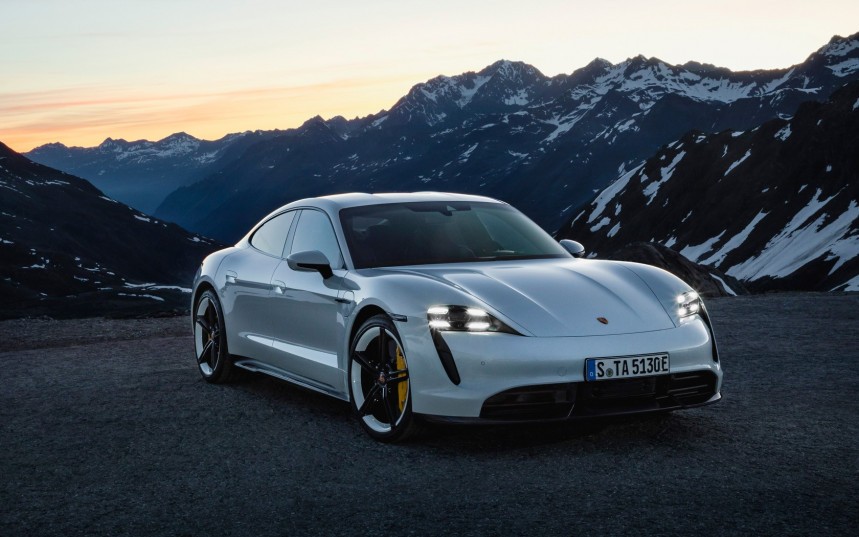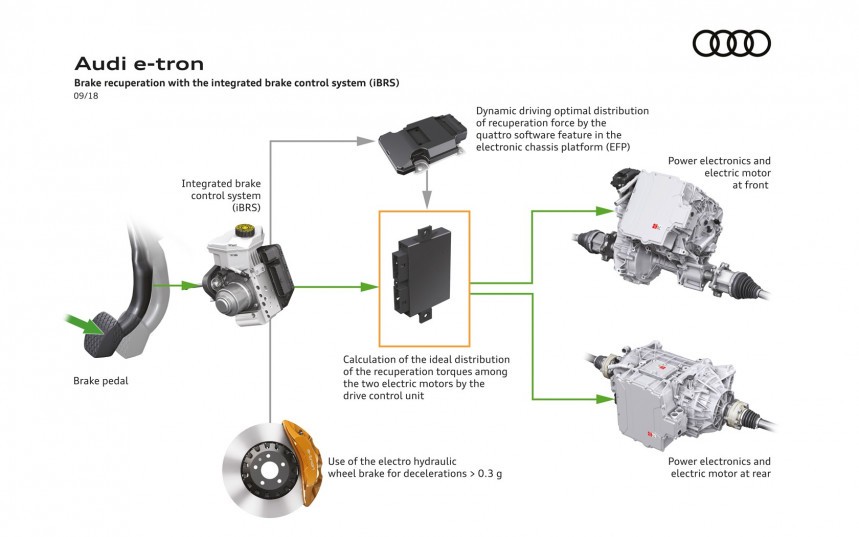The brake-by-wire technology used in the automotive industry enables the control of brakes through electrical means. It can either complement traditional service brakes or can be used as a standalone system.
With the exponential growth of hybrid and battery electric vehicles, this technology has become widespread as an independent system but has also been used for some time on mainstream vehicles in the form of the electric park brake.
It replaces conventional components with electronic actuators and sensors and is especially useful in vehicles with regenerative braking capabilities, where the brake pedal can control both braking and the harnessing of energy produced by it.
A traditional braking system requires a master cylinder and a vacuum pump to boost the braking force.
A brake-by-wire system essentially controls the brakes electronically using a travel sensor, which monitors how far you push the brake pedal and sends the information to a control unit.
In turn, this unit communicates with an integrated electric pump that generates the required pressure to slow down or stop the vehicle.
In some vehicles such as the Porsche Taycan or Audi e-tron, pressing the pedal lightly will activate the regenerative braking feature and the actual hydraulics will kick in only after a certain threshold is reached.
The system also features a series of sensors that monitor vehicle operation, road conditions, and driver actions, adapting the braking performance dynamically, to improve safety.
In terms of performance and efficiency, the electric pump can deliver more power than a conventional vacuum pump, which will significantly reduce stopping distances.
It also allows the customization of the brake pedal according to selected drive modes. For example, if you are using a sport driving mode, the brake pedal will be more responsive and if a comfort mode is selected, braking will be smoother.
Another advantage is that brake pedal travel will not increase when the brakes are punished and get hot. This means that the vehicle will brake more efficiently in demanding driving conditions such as a lap on your favorite racetrack.
One of the biggest fears people have regarding this system is that there is no physical connection between the pedal and the brakes themselves. In case of a system failure, mechanical pressure from the brake pedal will bypass the electronic actuation and will still be able to stop the vehicle.
Others complain that the simulated feedback produced seems synthetic, disconnected, and often dull. This, of course ,varies from one carmaker to another, but if all components are functioning correctly there should not be much of a difference in feedback compared to conventional braking.
Systems that only use brake-by-wire technology without the aid of conventional friction brake components have not made it into production yet, although some prototypes that use this feature have been revealed.
Another form of full drive-by-wire technology has been around for some time and you might be familiar with is throttle-by-wire. Electronic throttles have no mechanical connection between the gas pedal and the engine throttle. Instead, an array of sensors delivers information to the ECU, which adjusts the throttle and the amount of fuel injected. This increases efficiency by controlling fuel consumption and emissions, but that's another story for another time.
It replaces conventional components with electronic actuators and sensors and is especially useful in vehicles with regenerative braking capabilities, where the brake pedal can control both braking and the harnessing of energy produced by it.
A traditional braking system requires a master cylinder and a vacuum pump to boost the braking force.
A brake-by-wire system essentially controls the brakes electronically using a travel sensor, which monitors how far you push the brake pedal and sends the information to a control unit.
In turn, this unit communicates with an integrated electric pump that generates the required pressure to slow down or stop the vehicle.
In some vehicles such as the Porsche Taycan or Audi e-tron, pressing the pedal lightly will activate the regenerative braking feature and the actual hydraulics will kick in only after a certain threshold is reached.
In terms of performance and efficiency, the electric pump can deliver more power than a conventional vacuum pump, which will significantly reduce stopping distances.
It also allows the customization of the brake pedal according to selected drive modes. For example, if you are using a sport driving mode, the brake pedal will be more responsive and if a comfort mode is selected, braking will be smoother.
Another advantage is that brake pedal travel will not increase when the brakes are punished and get hot. This means that the vehicle will brake more efficiently in demanding driving conditions such as a lap on your favorite racetrack.
Others complain that the simulated feedback produced seems synthetic, disconnected, and often dull. This, of course ,varies from one carmaker to another, but if all components are functioning correctly there should not be much of a difference in feedback compared to conventional braking.
Systems that only use brake-by-wire technology without the aid of conventional friction brake components have not made it into production yet, although some prototypes that use this feature have been revealed.
Another form of full drive-by-wire technology has been around for some time and you might be familiar with is throttle-by-wire. Electronic throttles have no mechanical connection between the gas pedal and the engine throttle. Instead, an array of sensors delivers information to the ECU, which adjusts the throttle and the amount of fuel injected. This increases efficiency by controlling fuel consumption and emissions, but that's another story for another time.









